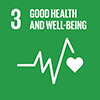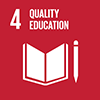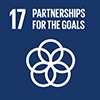Description/achievement of initiative
Saving Mothers, Giving Life (SMGL) is a five-year initiative to rapidly reduce maternal and newborn mortality in low-resource, high-burden sub-Saharan Africa countries. Launched by Secretary of State Clinton in 2012, this public-private partnership strengthens health services by increasing demand, facilitating access to quality, lifesaving care for the most vulnerable women, and strengthening health systems at the district level. The initiative was given the ambitious goals of reducing maternal mortality by 50% and perinatal morality by 30% in 8 pilot districts in Uganda and Zambia, and then scaling-up nationally in both countries. SMGL also expanded to include Cross River State, Nigeria.
Implementation methodologies
• Saving Mothers, Giving Life builds on the existing structures and resources that have been invested in successful national and US Government-supported maternal health and HIV programs, guided by national strategies for maternal and newborn health. To that end, the partnership focuses on the three delays that prevent women from benefiting from lifesaving maternal health services: the delay in seeking services, the delay in reaching services, and the delay in receiving high-quality services. SMGL gains an understanding of the landscape of safe delivery services in a given area by conducting in depth health facility assessments at all health care facilities, public or private, providing delivery services. The SMGL principle that all women should have access to comprehensive emergency care within two hours of the onset of a complication, helps inform the financial and technical inputs in order to maximize coverage and quality of services. SMGL focuses its efforts on the labor, delivery and 48-hour postnatal period as this is the time that women and babies are most vulnerable and the majority of deaths occur. The SMGL approach also support the provision of integrated MNH and HIV care.• Saving Mothers, Giving Life is not a “one-size fits all” model, and these strategies and assessments help inform the most appropriate interventions for each district. SMGL uses rigorous monitoring and evaluation to not only count, analyze, and report all maternal and newborn deaths, but also to track programming and guide the expansion of SMGL. Some key evidence-based interventions include:o Increasing demand by training community health workers, mobilizing community leaders, and promoting services and healthy behaviors. o Enabling access by upgrading facilities, providing transportation vehicles and/or vouchers, and building/refurbishing maternity waiting homeso Improving quality by hiring health care workers and providing on the job training and mentoring.o Strengthening health systems by improving supply chain management of supplies, equipment, and essential medicines, and training in data reporting and M&E.
Arrangements for Capacity-Building and Technology Transfer
The Saving Mothers, Giving Life approach fosters host-country ownership, capacity-building and sustainability: • AGOC has been working with the Zambian Ministry of Health to incorporate Uterine Balloon Tamponade (UBT), a low cost and effective technology to treat post-partum hemorrhage (the number one cause of maternal deaths), into the nation guidelines for postpartum hemorrhage management. It also initiated the MOH-endorsed policy shift to allow mid-wives to provide this life-saving care. ACOG is building a network of local trainers who will facilitate the nation-wide roll-out of UBT training. Trainees are also taught how to make UBT kits with local products, should kits not be available. • Project C.U.R.E. provides shipments of customized donated medical supplies, equipment, and related program services to SMGL facilities. After completing comprehensive needs assessments, Project C.U.R.E. produces individualized manifest lists of items for each facility, which are then reviewed and approved by facility directors and ministry of health officials, to ensure that the content is appropriate and needed. After the shipment arrives, they conduct impact evaluations for each container that is delivered to ensure that all equipment is functioning properly and being utilized appropriately. Project C.U.R.E. also holds bio-medical trainings for local engineers in the maintenance and repair of the donated equipment. • Additionally, rosters of mentors who can provide supportive supervision have been established in SMGL districts; this facilitates collaboration, knowledge sharing, problem solving and skills training. Job aids and materials for various technologies and interventions have been distributed among healthcare professionals and facilities, including UBT, Helping Babies Breathe, Helping Mothers Survive, and the BABIES Matrix (a simple tool to capture and monitor perinatal deaths in facilities) among others. SMGL has also fostered south to south collaboration, sharing, and learning between SMGL countries, with SMGL team members traveling to other countries to support and train in data collection and analysis. • Through SMGL efforts, maternal and perinatal death reviews are now standard in SMGL facilities• MOH leaders from both Uganda and Zambia have endorsed the SMGL approach as the standard model for scaling out maternal and newborn services.
Coordination mechanisms/governance structure
Saving Mothers, Giving Life employs a systems approach to addressing maternal and newborn morality by working with both public and private sectors to build on existing national, state, and local platforms. SMGL is coordinated through a secretariat, housed in USAID’s Bureau for Global Health, under the direction of the initiative’s Leadership Council, comprised of representatives from each of the founding partners of the initiative. Each partner of the Leadership Council plays an integral role, outlined below: The United States Government, through USAID, manages SMGL in partnership with CDC, OGAC, the Department of Defense, and the Peace Corps. Together, USAID and CDC lead implementation and monitoring and evaluation (M&E) activities for the initiative with oversight from the Operations Committee and the M&E Committee. The Government of Norway has supported efforts to access donated hospital supplies and equipment through support of Project C.U.R.E. Every Mother Counts leads efforts to strengthen emergency transportation and referral systems in Uganda and advocate for increased support for maternal mortality reduction globally.The American College of Obstetricians and Gynecologists lends scientific, technical, and clinical expertise. ACOG has established networks of trainers and mentors for specific clinical skills, such as use of Uterine Balloon Tamponade for postpartum hemorrhage, and has successfully advocated for national task shifting policies.Merck for Mothers leads programs to strengthen local private health providers through social franchising models in Uganda and Nigeria, and programs to develop entrepreneurial models for maternity waiting homes in Zambia. Project C.U.R.E. provides containers of customized donated medical supplies, equipment to SMGL facilities. Project C.U.R.E. completes on-site needs assessments in all selected SMGL facilities, generates manifests that are signed-off on by district health leaders, oversees door to door delivery, and completes impact evaluations for each container. SMGL operations include a rigorous M&E component that examines not only outputs and program outcomes, but health outcomes—such as the maternal mortality ratio and the perinatal morality rate--with the goal to count every maternal and newborn death and to understand its cause. A comprehensive baseline was undertaken at the inception of the initiative, with regular monitoring and quarterly reporting of 31 district, community and facility level indicators. Indicators are collected and analysed by implementing partners, and cleaned and analysed by CDC and USAID teams in country and headquarters. The M&E committee is also responsible for oversight of external evaluations.
Partner(s)
Founding partners: USG (USAID, CDC, OGAC, DoD, Peace Corps), Government of Norway, Government of Zambia, Government of Uganda, Government of Nigeria, American College of Obstetricians and Gynecologists, Every Mother Counts, Merck for Mothers, Project C.U.R.E.
Other stakeholders: Swedish Sida, Lafarge Foundation Zambia Zamnet, ELMA Philanthropies





 09/2017
09/2017
 09/2017
09/2017
 09/2017
09/2017
 09/2017
09/2017
 Time-frame: 06/2012 - 09/2017
Time-frame: 06/2012 - 09/2017